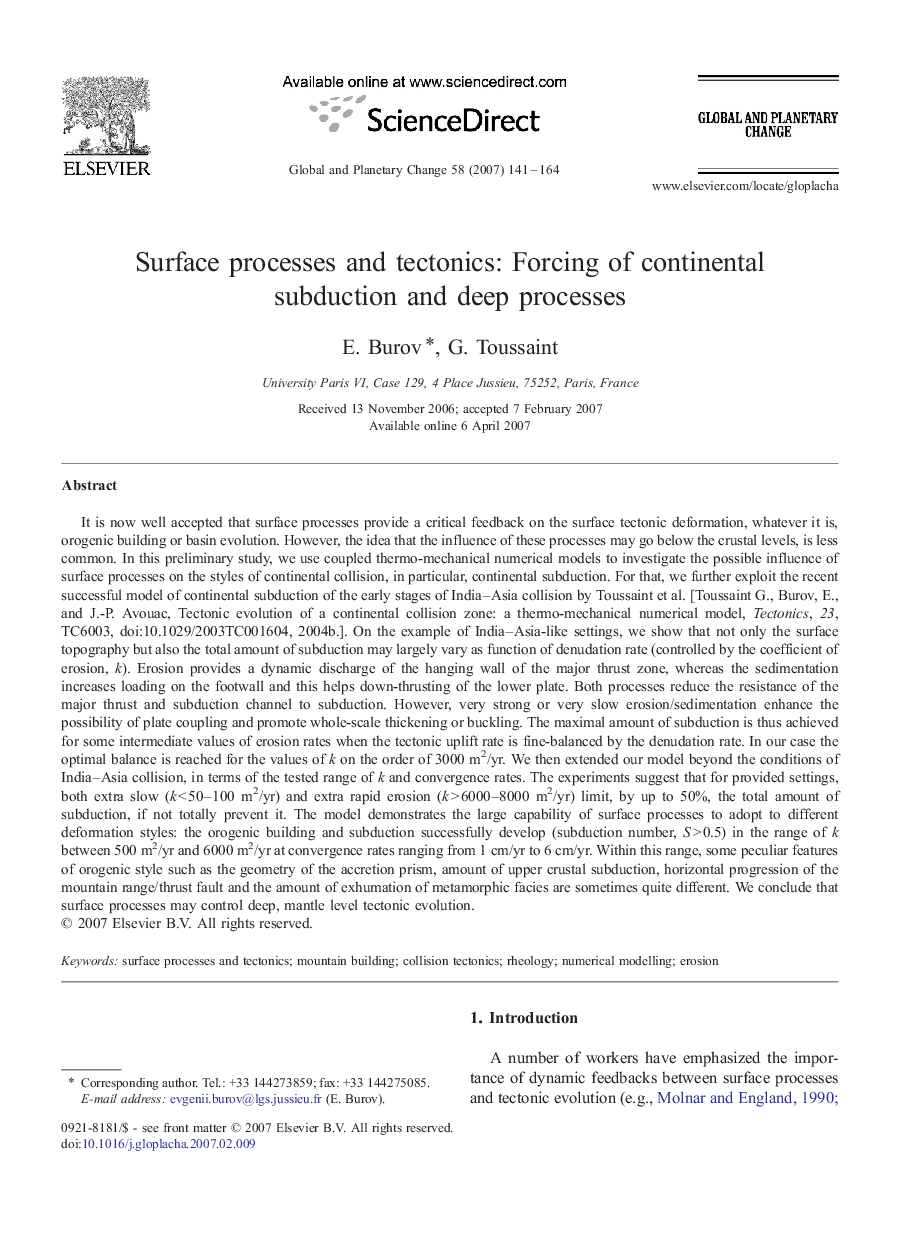| کد مقاله | کد نشریه | سال انتشار | مقاله انگلیسی | نسخه تمام متن |
|---|---|---|---|---|
| 4464340 | 1621727 | 2007 | 24 صفحه PDF | دانلود رایگان |

It is now well accepted that surface processes provide a critical feedback on the surface tectonic deformation, whatever it is, orogenic building or basin evolution. However, the idea that the influence of these processes may go below the crustal levels, is less common. In this preliminary study, we use coupled thermo-mechanical numerical models to investigate the possible influence of surface processes on the styles of continental collision, in particular, continental subduction. For that, we further exploit the recent successful model of continental subduction of the early stages of India–Asia collision by Toussaint et al. [Toussaint G., Burov, E., and J.-P. Avouac, Tectonic evolution of a continental collision zone: a thermo-mechanical numerical model, Tectonics, 23, TC6003, doi:10.1029/2003TC001604, 2004b.]. On the example of India–Asia-like settings, we show that not only the surface topography but also the total amount of subduction may largely vary as function of denudation rate (controlled by the coefficient of erosion, k). Erosion provides a dynamic discharge of the hanging wall of the major thrust zone, whereas the sedimentation increases loading on the footwall and this helps down-thrusting of the lower plate. Both processes reduce the resistance of the major thrust and subduction channel to subduction. However, very strong or very slow erosion/sedimentation enhance the possibility of plate coupling and promote whole-scale thickening or buckling. The maximal amount of subduction is thus achieved for some intermediate values of erosion rates when the tectonic uplift rate is fine-balanced by the denudation rate. In our case the optimal balance is reached for the values of k on the order of 3000 m2/yr. We then extended our model beyond the conditions of India–Asia collision, in terms of the tested range of k and convergence rates. The experiments suggest that for provided settings, both extra slow (k < 50–100 m2/yr) and extra rapid erosion (k > 6000–8000 m2/yr) limit, by up to 50%, the total amount of subduction, if not totally prevent it. The model demonstrates the large capability of surface processes to adopt to different deformation styles: the orogenic building and subduction successfully develop (subduction number, S > 0.5) in the range of k between 500 m2/yr and 6000 m2/yr at convergence rates ranging from 1 cm/yr to 6 cm/yr. Within this range, some peculiar features of orogenic style such as the geometry of the accretion prism, amount of upper crustal subduction, horizontal progression of the mountain range/thrust fault and the amount of exhumation of metamorphic facies are sometimes quite different. We conclude that surface processes may control deep, mantle level tectonic evolution.
Journal: Global and Planetary Change - Volume 58, Issues 1–4, July 2007, Pages 141–164